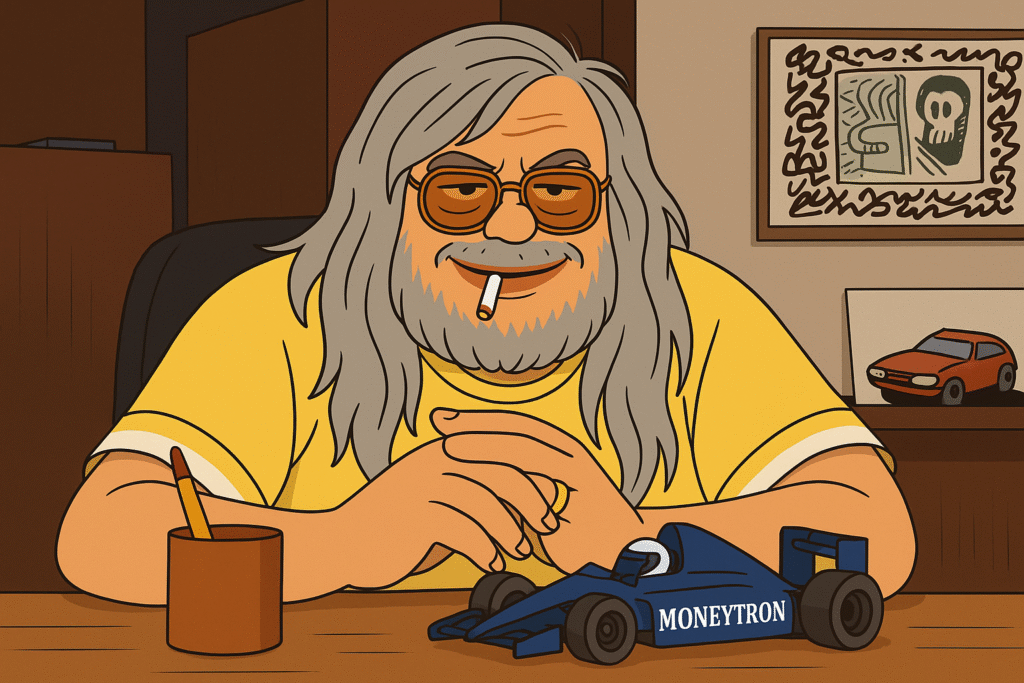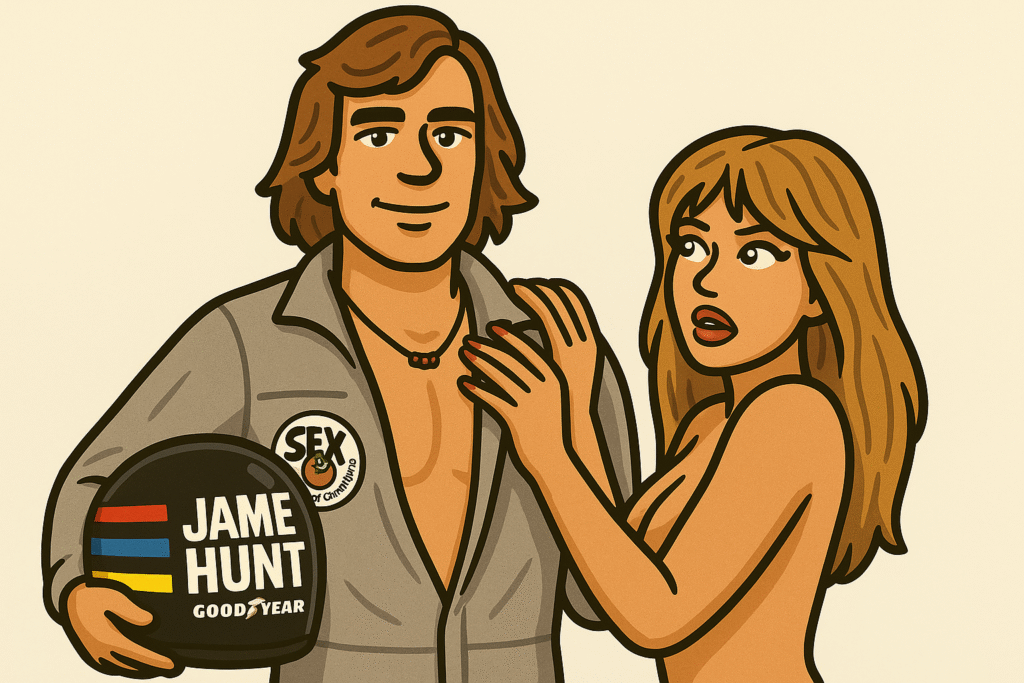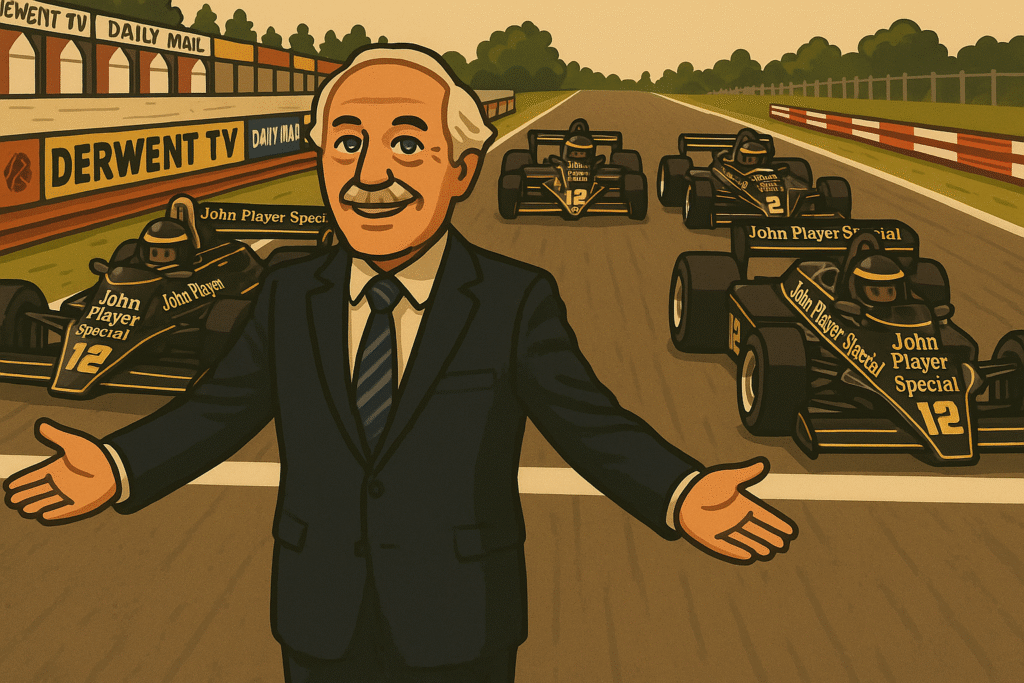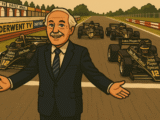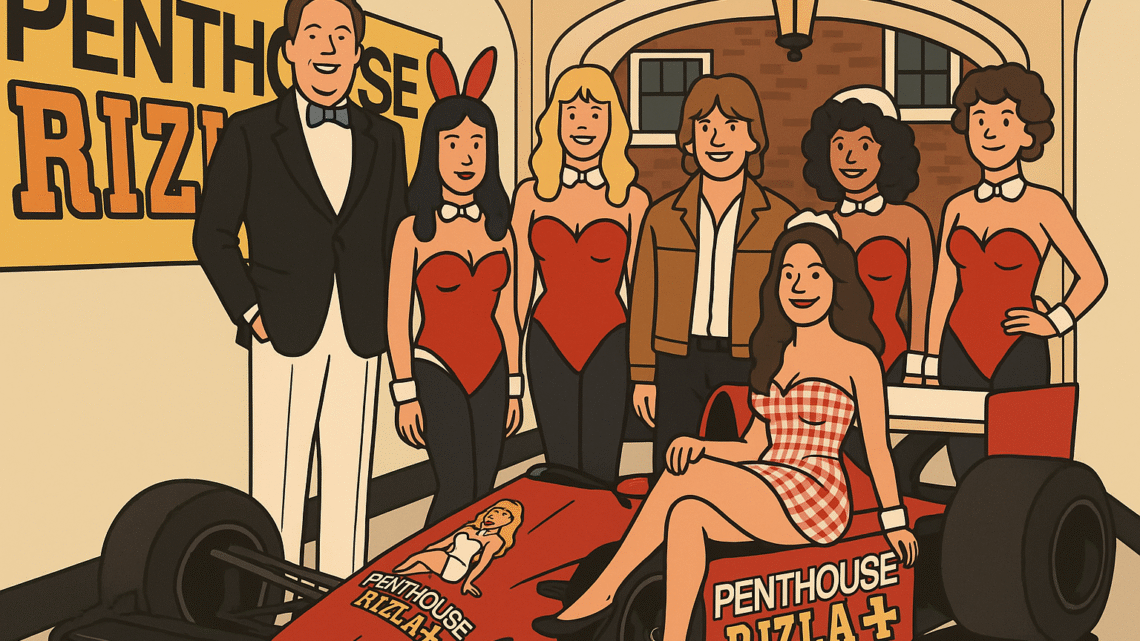
Hesketh Racing: The Playboy Team That Partied Their Way to F1 Glory
September 2, 2025Ah, the 1970s – a golden era of Formula 1 where danger danced with glamour, and the paddock smelled of Castrol R, cheap burgers, and warm beer. Amid the roar of engines and the scent of victory, one team stood out like a champagne cork popping in a monastery: Hesketh Racing. Founded by the eccentric 22-year-old Lord Alexander Hesketh and his chum Anthony “Bubbles” Horsley, this British outfit turned F1 into a rollicking adventure. With no corporate sponsors (at first), a teddy bear logo, and a philosophy of “work hard, play harder,” Hesketh captured hearts by thumbing its nose at the establishment. They raced from 1973 to 1978, entering 52 Grands Prix, snagging one win and eight podiums, and finishing as high as fourth in the 1975 Constructors’ Championship. But Hesketh wasn’t just about lap times; it was a lifestyle – yachts, helicopters, endless bubbly, and a driver named James Hunt who embodied the rockstar spirit. Let’s dive into this wild ride, from the lordly origins to the penthouse parties, and why this “biggest little racing team in the world” still makes us smile.
The Eccentric Lord and His Vision
Picture this: a young aristocrat, inheriting a sprawling 3,200-acre estate at age four, complete with a Hawksmoor-designed mansion and his own racecourse. That’s Lord Thomas Alexander Fermor-Hesketh, the 3rd Baron Hesketh, born in 1950 and thrust into wealth early after his father’s death. Dropping out of school to chase his passion for cars, he founded Hesketh Racing in 1972 initially for Formula Three fun with Horsley. Their goal? Weekends of thrills with like-minded souls – think van drivers who were grandsons of architects and caterers from posh Chelsea spots. Operating from the converted stables at Easton Neston, the team embodied anti-establishment vibes, arriving in Rolls-Royces and staying in five-star hotels while rivals scrimped.
Lord Hesketh’s “in for a penny, in for a pound” attitude propelled them to F1 by 1973, renting a Surtees for Hunt’s debut at Brands Hatch’s Race of Champions, where he finished third. He wasn’t just a financier; he was the ringmaster, signing contracts on beer mats and converting his estate’s stables into workshops for genius designer Harvey “Doc” Postlethwaite, who joined after a boozy recruitment. Hesketh’s ethos? “Men love women, but even more than that, men love cars.” His team was a rebellion against the corporate grind, attracting those who craved freedom and flair.
James Hunt: The Perfect Playboy Driver
No Hesketh story is complete without James Hunt, the lanky, long-haired maverick who became synonymous with the team. Born in 1947, Hunt climbed from Mini racing to F3, earning a “Hunt the Shunt” nickname for his crashes. Jobless in 1972 after a fallout with March, he met Hesketh at Chimay and joined as their F3 driver, quickly upgrading to F2 and F1. Hunt was the ideal fit: a nervous racer who vomited before starts but drove like a demon, loving fast cars, women, and budgerigars (yes, he bred birds and banned hunting on his farm).
With Hesketh, Hunt’s talent bloomed. In 1973, driving a modified March 731, he scored points in France (6th), Britain (4th), Netherlands (3rd), and USA (2nd). His patch reading “Sex – The Breakfast of Champions” summed up his vibe. Off-track, he was the 007 of F1 – rumor has it he “fiddled with more British Airways undercarriage than the Gatwick ground crew,” often with moto champ Barry Sheene as wingman. Hunt’s synergy with Hesketh was magic; his raw speed matched their daring, leading to that iconic 1975 Dutch GP win. But more on that later – Hunt’s Hesketh era was pure rock ‘n’ roll, making him a household name before his 1976 title with McLaren.
On-Track Thrills and That Epic Win
Hesketh’s racing record was no joke, despite the party image. Starting with rented cars in 1973, they debuted the Postlethwaite-designed 308 in 1974 – a sleek machine with a Ford Cosworth DFV V8, painted in patriotic red, white, and blue with that adorable teddy bear logo. Hunt won the non-champ Silverstone International Trophy and grabbed thirds in Sweden, Austria, and USA, netting 15 points for 6th in constructors.
1975 was their peak with the 308B and 308C. Hunt led in Argentina (2nd), dominated Silverstone’s International Trophy until an engine blow (due to his blistering Woodcote laps surging oil), and clinched glory at Zandvoort’s Dutch GP. In torrential rain turning dry, Hunt’s early slick tire switch and inch-perfect defense against Niki Lauda’s Ferrari sealed a 1.06-second win – Hesketh’s only championship victory. Union Jacks waved from dunes, and celebrations spilled into lakes back home. The team finished 4th in constructors with 33 points, including Hunt’s 2nd at Silverstone and 4ths in Germany and USA.
Later cars like the 308D (1976) and 308E (1977-78) were innovative – the 308C pioneered carbon fiber and rubber suspension – but funding woes limited success. Still, Hesketh gave debuts to talents like Alan Jones and even fielded skier Divina Galica. Their underdog spirit shone, proving playboys could punch above their weight.
Off-Track Shenanigans: Yachts, Champagne, and More
Hesketh’s real legend? The antics. They were F1’s original party animals, chartering yachts like the 162-foot Southern Breeze for Monaco, stocked with champagne and “good-looking women.” At 1974 Monaco, they had a grand piano in the garage for sing-alongs, a Rolls-Royce Corniche and Porsche Carrera as runabouts, and two yachts – Nefertiti for VIPs and Henry Morgan for the crew. Lord Hesketh in bespoke white suits, Hunt puking from nerves then charming the ladies – it was chaos.
Champagne flowed win or lose; after Zandvoort, parties lasted till dawn. They booed back at jeering crowds in Germany when the car broke, and Hunt’s wedding to Suzy Miller had Hesketh as best man. Mechanics in sweaters and jeans contrasted today’s jumpsuits, and Italian rivals munched antipasto mid-work. Hesketh’s “entertainment division” – cocktail makers, pilots for helicopters and planes – made them the paddock’s envy and ridicule. As Lord Hesketh said, they were “more like a band than a racing team.”
Sponsorship Shenanigans with Penthouse and Rizla
Initially sponsor-free to maintain purity, Hesketh bowed to reality in 1976, landing Penthouse magazine and Rizla cigarette papers – a match made in cheeky heaven. The 308D and 308E sported brazen liveries: scantily clad models, French maids, and bold branding that raised eyebrows. Penthouse Pet Suzanne Turner posed beside the car, her image airbrushed on the cockpit. Marketing was pure 70s flair – launches with models, leveraging the team’s playboy rep to attract edgy fans.
This fit Hesketh’s irreverent image, drawing controversy but visibility. Drivers like Rupert Keegan (a self-proclaimed playboy) and Guy Edwards embodied the vibe. It attracted rebels weary of corporate F1, boosting the team’s “sex, drugs, and fast cars” aura. By 1977, the Penthouse-Rizla livery was one of F1’s most notorious, symbolizing Hesketh’s last hurrah before folding.
Who Was Drawn to This Madcap Team?
Hesketh attracted an eclectic crowd: aristocrats, thrill-seekers, and anti-establishment types craving fun over formality. Public school boys like the van driver (grandson of Albert Hall’s architect) and society photographers joined for the larks. Fans were everyday Brits waving Union Jacks from dunes, plus celebrities and playboys like Barry Sheene. The sponsorships pulled in edgier crowds – those into adult mags and rolling papers, rebels against the “beige” drivers of today. It appealed to romantics dreaming of underdog glory, free spirits who saw F1 as adventure, not business. As Lord Hesketh noted, they were for “racing for Britain, racing for you.”
The Decline and Enduring Legacy
Money dried up post-1975; Hunt left for McLaren (winning the ’76 title), Postlethwaite to Ferrari. Hesketh sold the 308C to Wolf-Williams and staggered on with sponsors, but poor results (best 7th in 1976-77) led to folding after 1978’s early races. Lord Hesketh pivoted to politics under Thatcher, sold his estate, and founded Hesketh Motorcycles.
Yet Hesketh’s legacy endures: the last privateer win, inspiring underdogs, and injecting joy into F1. Retro GP owns the trademarks, and stories of their antics – from beer-mat contracts to dune parties – remind us F1 was once wild fun. In today’s clinical world, we miss teams like Hesketh – proof that playboys can beat the big boys with grit, grace, and gallons of champagne.
